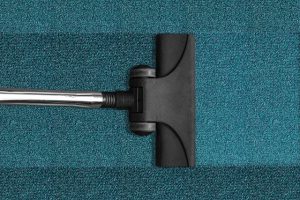Discover the secrets to cleaning and maintaining your wooden furniture without causing any damage. Learn about the best techniques and products to achieve a stunning, long-lasting finish.
Why is Cleaning Wooden Furniture a Delicate Task?
Wooden furniture is a beautiful addition to any home, but it requires proper care and maintenance to keep it looking its best. Cleaning wooden furniture may seem simple, but it's actually a delicate task that requires attention to detail. There are several reasons why cleaning wooden furniture can be tricky, and it's important to be aware of them before you start cleaning.
- 1. Damage from Scratches and Scuffs:
One of the primary concerns when cleaning wooden furniture is the risk of scratches and scuffs. Even the smallest scratch can be noticeable on a wooden surface, and it can be difficult to repair without professional help. Scratches can occur when using the wrong cleaning tools or applying too much pressure while cleaning. This is why it's important to be gentle and use the right cleaning tools when cleaning wooden furniture.
- 2. Moisture and Water Damage:
Another reason why cleaning wooden furniture is a delicate task is the risk of moisture and water damage. Excessive moisture can cause wood to warp, crack, and even rot over time. Water damage can occur from spills, excessive humidity, or even cleaning with too much water. This is why it's important to use the right cleaning products and avoid using too much water when cleaning wooden furniture.
- 3. Damage from Harsh Chemicals:
Using harsh chemicals when cleaning wooden furniture can cause irreparable damage to the surface of the wood. Certain chemicals can strip away the protective finish of the wood, leaving it vulnerable to damage from moisture and scratches. It's important to use gentle cleaning products that are specifically designed for use on wooden furniture to avoid damaging the surface of the wood.

A close-up of a person gently wiping a wooden table with a soft cloth.
Choosing the Right Cleaning Products: What Works and What Doesn't?
When it comes to cleaning wooden furniture, choosing the right cleaning products is crucial. Using the wrong products can cause irreparable damage to the wood, so it's important to know what works and what doesn't. Here are some tips for choosing the right cleaning products for your wooden furniture:
- 1. Avoid Harsh Chemicals:
As mentioned earlier, harsh chemicals can cause damage to wooden furniture. This includes products like bleach, ammonia, and even some all-purpose cleaners. Instead, look for cleaning products that are specifically designed for use on wooden furniture. These products are often labeled as "wood cleaners" or "furniture polish."
- 2. Check the Label:
When choosing a cleaning product, it's important to read the label carefully. Look for products that are safe for use on wooden surfaces and that don't contain any harsh chemicals. If you're not sure which product to choose, ask a sales associate for recommendations.
- 3. Test on a Small Area:
Before using a new cleaning product on your wooden furniture, it's a good idea to test it on a small, inconspicuous area first. This will help you determine whether the product is safe to use on your furniture without causing any damage.
- 4. Use a Soft Cloth:
When applying cleaning products to your wooden furniture, it's important to use a soft, lint-free cloth. Avoid using abrasive materials like steel wool, as these can scratch the surface of the wood.
- 5. Don't Use Too Much Product:
When cleaning wooden furniture, it's important not to use too much product. Excess product can leave a residue on the surface of the wood, which can be difficult to remove. Instead, use a small amount of product and buff the surface of the wood with a clean cloth after applying.
Can Natural Remedies be the Answer to Your Wooden Furniture Woes?
When it comes to cleaning wooden furniture, some people prefer to use natural remedies instead of chemical products. While natural remedies can be effective, it's important to keep in mind that not all remedies are safe for use on all types of wood. Here are some natural remedies that can be used to clean wooden furniture, along with some tips for using them safely.
- 1. Vinegar and Water:
One popular natural remedy for cleaning wooden furniture is vinegar and water. This simple solution can be made by mixing equal parts white vinegar and water in a spray bottle. While vinegar is safe for use on most types of wood, it's important to test the solution on a small, inconspicuous area first to make sure it doesn't cause any damage. To use, simply spray the solution onto the surface of the wood and wipe it clean with a soft cloth.
- 2. Olive Oil and Lemon Juice:
Another natural remedy for cleaning wooden furniture is a mixture of olive oil and lemon juice. This solution can be made by mixing one part lemon juice with two parts olive oil. While this solution can be effective at removing dirt and grime from wooden furniture, it's important not to use too much oil, as this can leave a greasy residue on the surface of the wood.
- 3. Baking Soda and Water:
For tough stains and grime, a mixture of baking soda and water can be used to clean wooden furniture. This solution can be made by mixing equal parts baking soda and water to form a paste. Apply the paste to the stained area and let it sit for a few minutes. Then, gently scrub the area with a soft brush or cloth and rinse with water.

A bowl of homemade wood cleaner made from natural ingredients.
"Less is More": How Often Should You Clean Your Wooden Furniture?
When it comes to cleaning wooden furniture, the old adage "less is more" definitely applies. Over-cleaning your wooden furniture can actually do more harm than good, as it can strip the wood of its natural oils and lead to cracking and splitting. So, how often should you clean your wooden furniture?
The answer depends on a number of factors, including the type of wood, the finish, and how often the furniture is used. In general, it's a good idea to dust your wooden furniture regularly with a soft cloth or feather duster to prevent the buildup of dirt and dust.
For deeper cleaning, a gentle solution of water and vinegar or a commercial wood cleaner can be used once or twice a year. However, it's important not to overdo it – using too much cleaner or applying too much pressure when cleaning can damage the wood.
It's also important to avoid using harsh chemicals or abrasive materials on wooden furniture, as these can scratch and damage the surface. Instead, opt for gentle, non-abrasive cleaning materials and solutions.
In addition to regular cleaning, it's also a good idea to protect your wooden furniture from damage by using coasters, placemats, and other protective measures. This can help prevent scratches, stains, and other types of damage that can occur from everyday use.
Cleaning Techniques:
| Technique | Product | Frequency | Notes |
|---|---|---|---|
| Dusting | Soft cloth | Weekly | Avoid using chemicals |
| Wiping | Damp cloth | Monthly | Avoid using abrasives |
| Polishing | Wood polish | Yearly | Test on a small area first |
| Oiling | Wood oil | Every 2-3 Years | Choose an oil that is suitable for the type of wood |
In conclusion, properly cleaning and maintaining wooden furniture is essential for preserving its beauty and longevity. By using the right techniques and products, you can ensure that your furniture remains in top condition for years to come.






